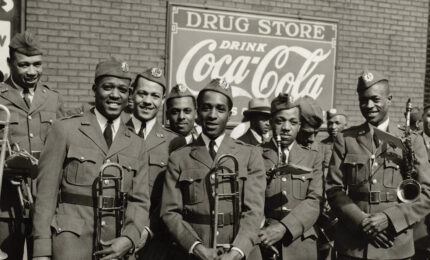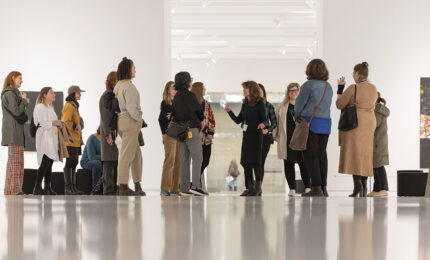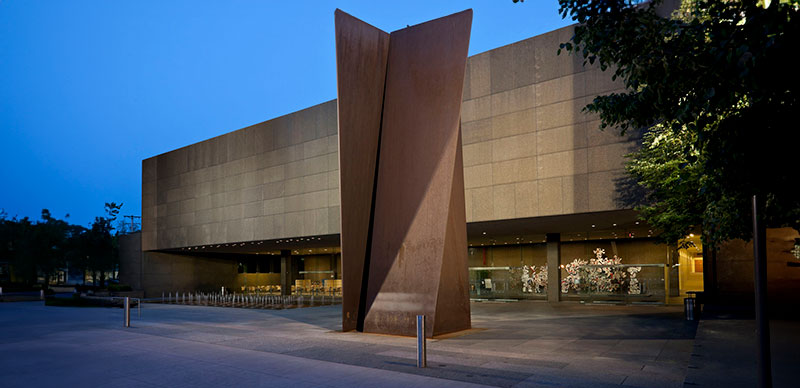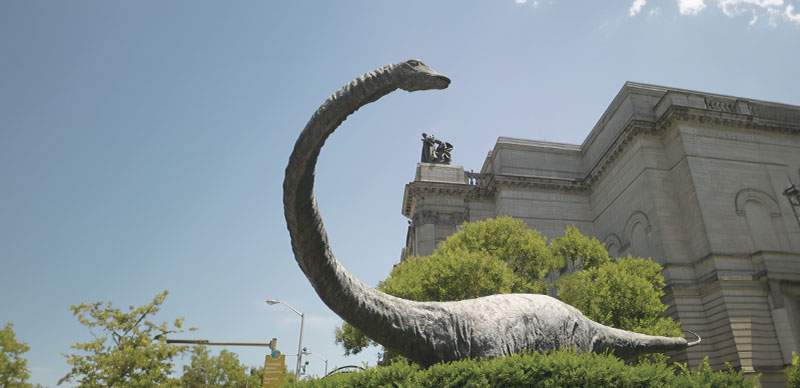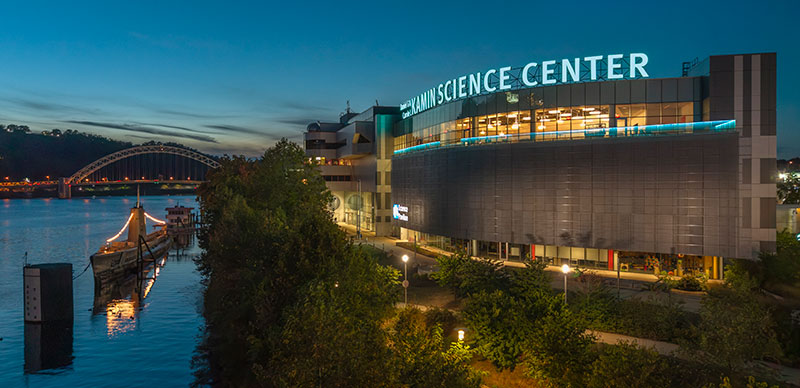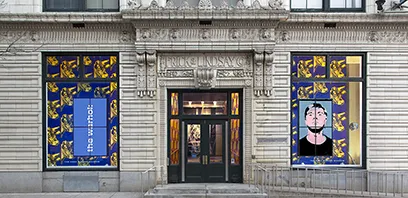The Madrasat Addeera arts education center teaches visitors traditional Saudi Arabian crafts like mixing earthen pigments, embroidery, and wood carving. But recently, the arts center in the ancient Arabic city of AIUIa has added a new technique to its repertoire—silkscreening soda can imagery, à la Andy Warhol.
This pop-top Pop Art was one of the free workshops offered in partnership with The Andy Warhol Museum as part of a groundbreaking exhibition of 70 Warhol works that premiered at the 2023 AlUla Arts Festival in February and runs through mid-May.
One of the oldest cities on the Arabian Peninsula, AlUla is reinventing itself as a tourism hub where high-profile cultural initiatives dovetail with ancient ruins. With Warhol’s ostentatious style and status as a gay icon, his inclusion in the city’s second annual arts festival is symbolic of a cultural shift in AlUla.
“Andy Warhol is one of the pioneers of the Pop Art movement, which began in the early sixties, and that period reflects what is happening right now in AlUla,” said Nora Aldabal, executive director of Arts AlUla, in a Twitter video promoting FAME: Andy Warhol in AlUla.
Saudi Arabia is undertaking an ambitious agenda of social and economic reforms aimed at diversifying its economy and improving its global public image amid criticism over its human rights abuses. According to Aldabal, Arts AlUla looks to contribute to this moment of cultural exchange by showcasing work of the most important artists from the mid-20th century on.
Saudi Arabia has traditionally been known as a religiously conservative place where extramarital sex and same-sex relationships are still illegal, modesty is valued, and, until just a few years ago, women were required to cover their heads and dress in floor-length robes. However, a comprehensive plan for the country’s future, unveiled by Crown Prince and Prime Minister Mohammed bin Salman in 2016, prioritized tolerance and creating “opportunity for all.”
“Not so many years ago, it was impossible to show a human figure at all in an exhibition in Saudi Arabia, so when I proposed a portrait show, I didn’t know what they’d say,” says Patrick Moore, director of The Andy Warhol Museum and vice president of Carnegie Museums of Pittsburgh. “But, I had absolutely zero problem. They didn’t really give me any restrictions at all.”
Moore says he was welcomed in AlUla as an openly gay man. And when Warhol staffers visited to plan the exhibition, they saw women dressed in T-shirts and jeans mixed in among those who were veiled and covered.
“I think the evolution of their culture is happening more rapidly than we understand,” Moore asserts, adding that he expects Warhol’s captivation with celebrity to appeal to that changing culture and AlUla’s youthful population.
“I started thinking about Warhol’s fascination with fame and how it plays out differently now than when he was alive and working,” Moore says.
Warhol went to the cinema and collected publicity photos of Hollywood stars, while the current generation is digitally well connected and eager to engage on social media. Saudi youth may be more familiar with the Kardashians than many of Warhol’s subjects, but Moore says the allure of celebrity is shared.
Capitalizing on the universal attraction of stardom, Moore curated FAME: Andy Warhol in AlUla with a focus on Warhol’s paintings and prints of celebrities like Elizabeth Taylor, Muhammad Ali, and Dolly Parton along with filmed portraits of 1960s counterculture figures.
“As we travel our collection around the world, each country relates to Warhol differently,” Moore says. “But the largest reaction I’ve seen thus far in Saudi Arabia is a willingness and excitement to engage with an American museum.”
Heather White, associate director of learning at The Warhol, says the enthusiasm of the art educators at Madrasat AdDeera was palpable as she helped them configure the silkscreen studio and learn to teach other Warhol processes like rubber stamping and acetate collage.
She and Nicole Dezelon, The Warhol’s director of learning and public engagement, researched the people, places, and culture of AlUla to make Warhol’s artistic approach more relevant to a Saudi audience.
Riffing on his use of well-known landmarks like the Statue of Liberty, they adapted the ruins of AlUla Old Town, and the tombs at Hegra, Saudi Arabia’s first UNESCO World Heritage Site, into silkscreen subjects. As Warhol focused on endangered species for a series, White and Dezelon suggested spotlighting the Arabian leopard, a protected species with dwindling numbers.
“Making connections between Andy Warhol and a place in the middle of the desert is part of the challenge as well as part of the charm.”
– Nicole Dezelon, The Warhol’s Director Of Learning And Public Engagement
“Making connections between Andy Warhol and a place in the middle of the desert is part of the challenge as well as part of the charm,” Dezelon says. “We come up with connections we think will work, but then we go into the community and say, ‘Do these track?’”
They did for the 85 attendees of the workshop’s opening event, where one young woman showed off her creation as she sported a Warhol T-shirt. Dezelon says workshop facilitators and guests gravitated to the idea of making art from everyday objects.
The accessibility of Warhol’s work and his ability to find beauty in the commonplace contrast with his attraction to celebrity, a dichotomy that offers insight into the American culture that shaped him.
“There’s something intangible with his artwork, which is a sense of joy that comes from it,” Moore says. “i hope they see American culture as joyful and beautiful and inspiring.”


